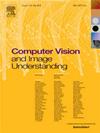A MLP architecture fusing RGB and CASSI for computational spectral imaging
IF 4.3
3区 计算机科学
Q2 COMPUTER SCIENCE, ARTIFICIAL INTELLIGENCE
引用次数: 0
Abstract
The coded Aperture Snapshot Spectral Imaging (CASSI) system offers significant advantages in dynamically acquiring hyper-spectral images compared to traditional measurement methods. However, it faces the following challenges: (1) Traditional masks rely on random patterns or analytical design, limiting CASSI’s performance improvement. (2) Existing CASSI reconstruction algorithms do not fully utilize RGB information. (3) High-quality reconstruction algorithms are often slow and limited to offline scene reconstruction. To address these issues, this paper proposes a new MLP architecture, Spectral–Spatial MLP (SSMLP), which replaces the transformer structure with a network using CASSI measurements and RGB as multimodal inputs. This maintains reconstruction quality while significantly improving reconstruction speed. Additionally, we constructed a teacher-student network (SSMLP with a teacher, SSMLP-WT) to transfer the knowledge learned from a large model to a smaller network, further enhancing the smaller network’s accuracy. Extensive experiments show that SSMLP matches the performance of transformer-based structures in spectral image reconstruction while improving inference speed by at least 50%. The reconstruction quality of SSMLP-WT is further improved by knowledge transfer without changing the network, and the teacher boosts the performance by 0.92 dB (44.73 dB vs. 43.81 dB).
融合 RGB 和 CASSI 的 MLP 架构,用于计算光谱成像
与传统测量方法相比,编码孔径快照光谱成像(CASSI)系统在动态获取高光谱图像方面具有显著优势。然而,它也面临着以下挑战:(1)传统的掩膜依赖于随机模式或分析设计,限制了 CASSI 性能的提高。(2) 现有的 CASSI 重建算法没有充分利用 RGB 信息。(3) 高质量的重建算法通常速度较慢,且仅限于离线场景重建。为了解决这些问题,本文提出了一种新的 MLP 架构--光谱空间 MLP (SSMLP),它利用 CASSI 测量和 RGB 作为多模态输入,用一个网络取代了变压器结构。这既保持了重建质量,又大大提高了重建速度。此外,我们还构建了一个师生网络(SSMLP with a teacher,SSMLP-WT),将从大型模型中学到的知识转移到小型网络中,进一步提高了小型网络的准确性。大量实验表明,SSMLP 在光谱图像重建方面的性能与基于变压器的结构相当,同时推理速度至少提高了 50%。在不改变网络的情况下,通过知识转移,SSMLP-WT 的重建质量得到了进一步提高,教师将其性能提高了 0.92 dB(44.73 dB 对 43.81 dB)。
本文章由计算机程序翻译,如有差异,请以英文原文为准。
求助全文
约1分钟内获得全文
求助全文
来源期刊

Computer Vision and Image Understanding
工程技术-工程:电子与电气
CiteScore
7.80
自引率
4.40%
发文量
112
审稿时长
79 days
期刊介绍:
The central focus of this journal is the computer analysis of pictorial information. Computer Vision and Image Understanding publishes papers covering all aspects of image analysis from the low-level, iconic processes of early vision to the high-level, symbolic processes of recognition and interpretation. A wide range of topics in the image understanding area is covered, including papers offering insights that differ from predominant views.
Research Areas Include:
• Theory
• Early vision
• Data structures and representations
• Shape
• Range
• Motion
• Matching and recognition
• Architecture and languages
• Vision systems
 求助内容:
求助内容: 应助结果提醒方式:
应助结果提醒方式:


